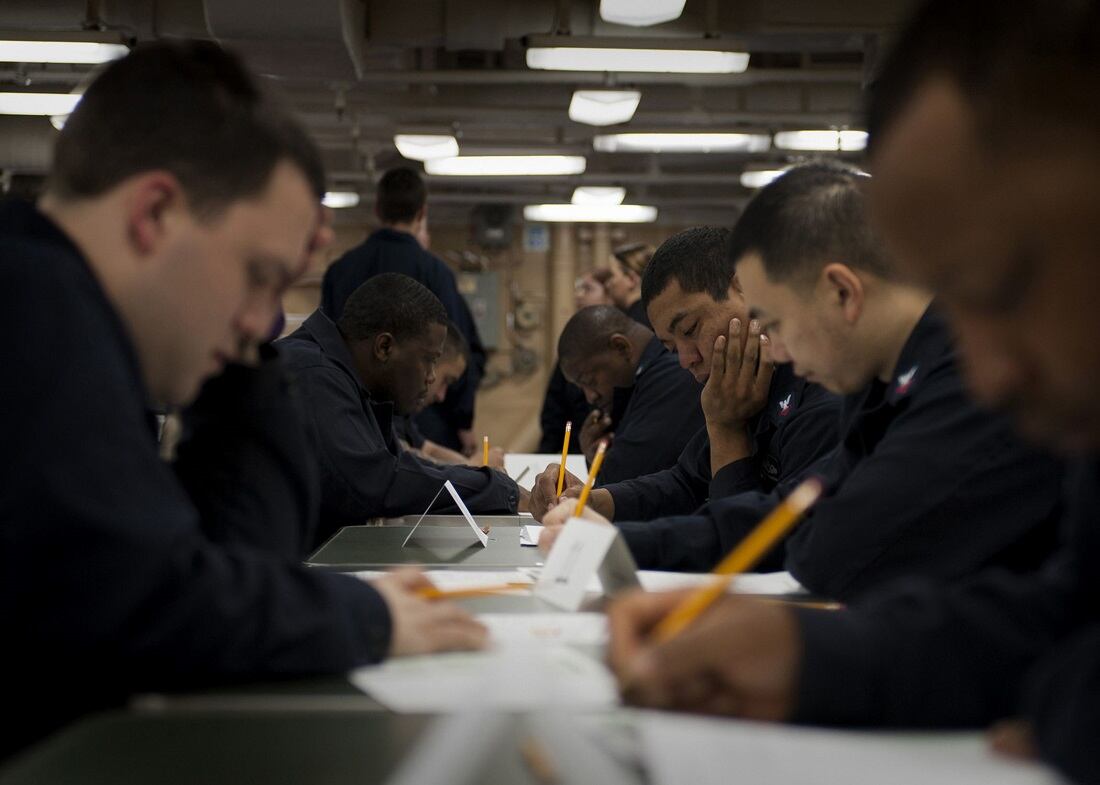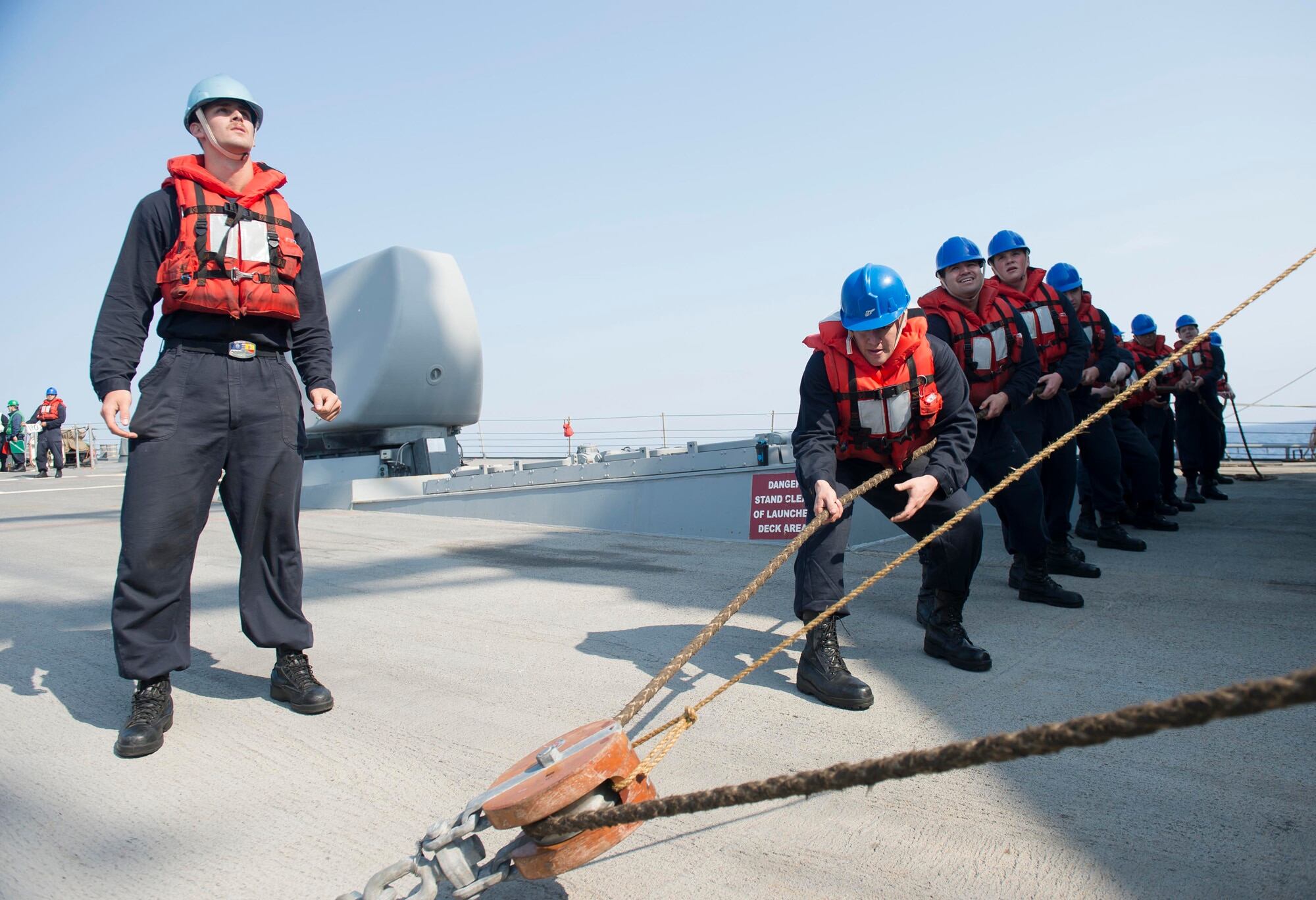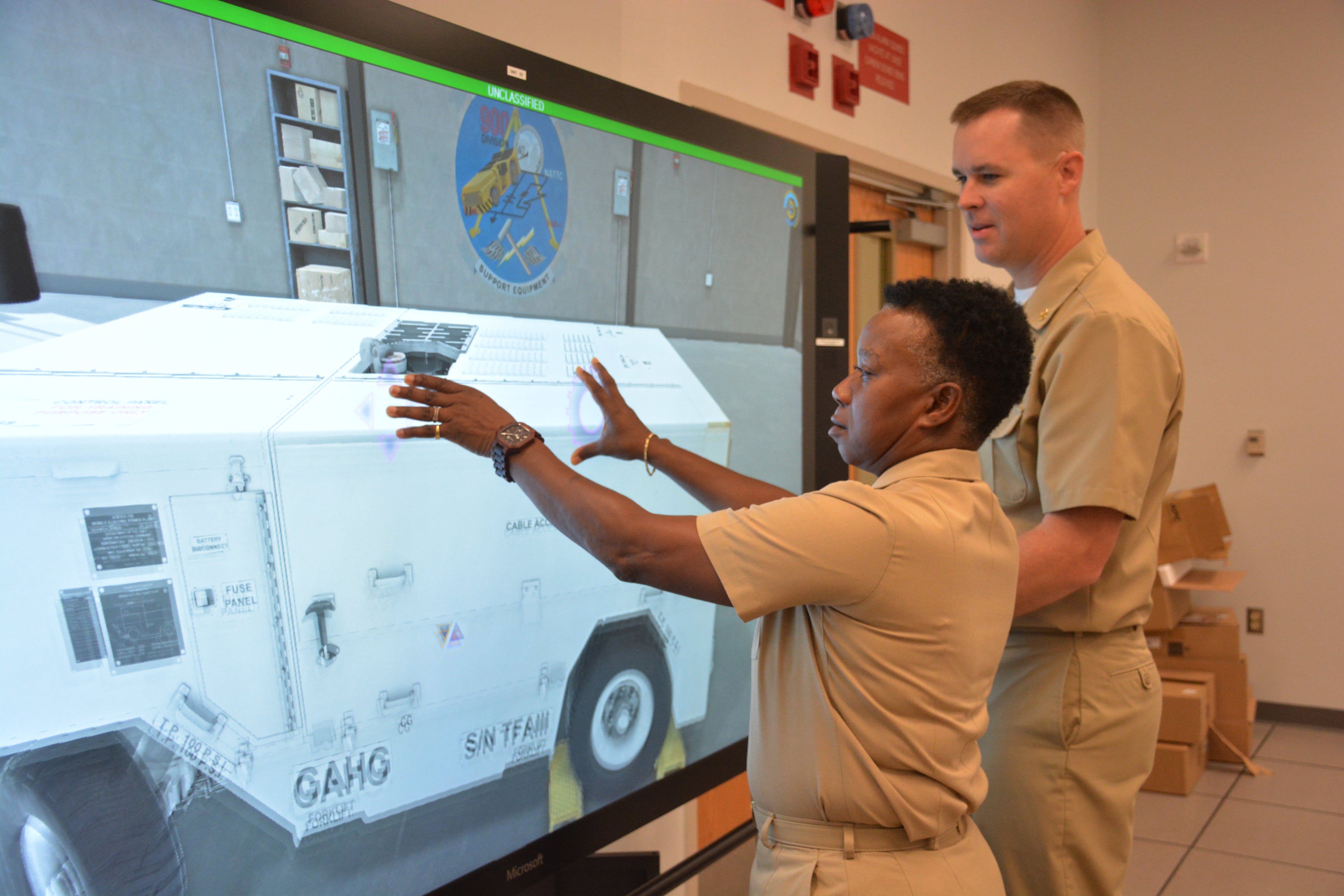Navy officials are gaining steam in a multi-year effort to transform their personnel system and are setting in motion changes that could allow sailors begin to manage their careers on their phones within the year, among other improvements.
“We used the term “Sailor 2025” to challenge ourselves to think about what sailors ten years in the future would expect and need, and to deliver those cutting-edge systems and policies now,” Vice Adm. Robert P. Burke, the Navy’s chief of personnel wrote in a March 2018 blog.
But they’re not waiting until 2025 to roll it all out. The entire effort includes nearly 45 separate reforms that are being rolled out and refined as they go, designed to put personnel decisions in the hands of sailors while at the same time increasing readiness in the fleet.
The effort also includes the development of a new career training system known as “Ready Relevant Learning,” which will cutback on time at traditional “A schools” and is designed to spread more training over a sailor’s career.
“We also knew we had to be smarter about training our increasingly technical force,” Burke wrote. “There were better ways to get the practical knowledge into our sailors’ hands — we could do it faster and in a way that sticks.”
RELATED

To make this all possible, Burke said that the Navy’s whole delivery system, from database backbones to sailor-facing front ends, has to be retooled. What they want is something more like those available in the business world, because that’s what today’s sailors expect.
The goal is to “treat our sailors like adults, be transparent, give them realistic choices, and even put some market forces to work,” Burke said.
Smartphone access
Burke hopes the Navy’s personnel system will be the among the first in the Defense Department to go into the commercial cloud. And later this year, the service will start to open up the ability for sailors to handle personnel transactions on their smartphones.
“By the end of 2019, sailors will do most of their personnel business via smartphone ashore or desktop apps afloat,” Burke wrote. “Your smartphone has more computing power, better software and update processes, and is more user-friendly than any of our Navy’s personnel IT systems.”
Changes like these will bring the Navy’s practices closer to how the civilian sector and industry is training, managing and detailing their work forces.
“Our personnel system modernization initiatives are aimed at providing better tools to sailors and leadership to empower Commanding Officers and give sailors more choices and ownership over their careers,” Burke said.

“These programs are being rapidly spiraled out as fast as we can deliver them, and modified as we learn. This is not Washington, D.C. business as usual.”
Over the past four years, the Navy has gradually expanded meritorious, unit-level advancements, giving commanding officers the authority to advance their own sailors up to the E-6 paygrade without them having to compete on Navy-wide exams.
The plan for the future is to possibly put exams online while eventually tailoring them to the individual to get a better measure of their on-the-job knowledge.
On the officer side, Navy policy changes in recent years are making it easier for officers to attend graduate school or spend a few years working in private industry to add to their skillset, which they can then bring back to the fleet.
Nearing completion is a total modernization of the Navy’s enlisted rating structure that was started in 2016.
“This is about bringing our rating system into the 21st century,” Burke said.
“We’re modernizing our rating system to redefine enlisted career fields, improve talent management and the detailing process, offer more career choices, and expand professional development opportunities.”
The Navy wants to broaden career fields by linking together ratings with similar skills to eventually allow sailors to move laterally in a way they’ve never been able to before.
Sailors will be able to expand their personal skill qualifications and, in turn, open up alternate routes for advancement as well as more assignment opportunities.
“This will provide greater choices and transparency for our sailors in both detailing and training, as well as greater flexibility for our Navy in assigning our highly-trained and talented personnel to critical billets,” Burke said.
Navy officials use two measures to describe fleet manning levels: fill and fit.
Fill simply means a fleet job is filled with a sailor with the right rating and paygrade. Fit, on the other hand is a higher measure, meaning a sailor has additional skills that make them an even better match for the job.
The Navy wants to expand on this to allow the detailing system to better view the sailor as a whole, and also to allow sailors to have two-way conversations with their detailers and prospective gaining commands.
“We’re developing a system that will be the Navy’s version of LinkedIn, a one-stop shop for reenlistment and billet negotiation, where sailors will be able to connect directly with open positions, communicate their desires, and negotiate orders,” he said.
“Our idea is that sailors will see all available billets and the ‘market’ will drive negotiations.”
At the same time, changes are in the works to allow sailors to negotiate longer-term deals for more than one tour. One proposed change is to offer sailors fast-tracked advancements in exchange for taking hard-to-fill billets in less-than-ideal locations.
Sailors may want to negotiate for geographic stability, education opportunities and even co-location with a military spouse.
Burke has repeatedly said that they want to open up more non-monetary incentives to go along with the existing special pays and bonuses.
Many of these ideas are still in the early planning stages, Burke said, but a new detailing system will begin testing this year, which will include mobile access.
New evals
New advancement ideas and better detailing will be helped along by the service’s overhaul of its existing Performance Evaluation System, which has been in place with only minor adjustments for decades.
As a result, many unwritten rules — mostly at the command level — have popped up, and Burke says the Navy needs to find better ways to measure sailor performance to pave the way for more modernized advancement and detailing processes.
One problem Burke says needs to be eliminated is what the service calls “forced distribution,” which mandates the number of promotion recommendations a command can hand out to their sailors. Over the years, that has led to many unwritten, command-level rules that create inequities among sailors.
“Our vision, now in its third large-scale pilot, features a standards-based scale where individuals are compared against a standard for their rank [from across the fleet] instead of their peers [at their current command],” he said. “The first two pilots showed excellent correlation with the overall grades of the old system, but also provided meaningful individual trait grades, which has significant potential.”
RELATED

And here, too, the Navy seeks to make it easier for leaders and commands to complete evaluations. A third pilot will be out early this summer, which officials say will be a smoother version of the product, and implementation isn’t far off.
“Once the tool is finalized, we are planning a phased implementation, beginning late this year by using it in the fleet as an informal counseling tool to allow early familiarization and additional Fleet input for refinement while we finalize plans.”
A large part of the overall picture of the Navy’s personnel transformation is in reworking how sailors are trained throughout the course of their careers. That transformation is underway now as the Navy is rolling out its “Ready Relevant Learning” effort.
The goal now is to spread training over the entire career and dish it out only when the sailor needs it. This will result in a 30 percent decrease in initial post-boot camp training and will see sailors return for training during different points of their careers for refresher and new skill training.
Nine ratings are already incorporating the new training path, having their training broken into blocks of learning while identifying when sailors need to receive classwork.
“To date, we have completed Block Learning analysis for 54 rating paths, approved changes for 25 ratings, with nine now delivering training in this new continuum,” Burke wrote.
The end goal, Burke says, is to eventually move the Navy’s training methods into the 21st century by totally reworking when, where and how sailors are trained.

Some of the training will be in traditional brick-and-mortar classrooms, while other “blocks” might be delivered online.
“The second line of effort for RRL will provide modern delivery of training by taking advantage of emerging learning technologies to allow sailors to receive training at the point of need ... at the waterfront or aboard their operational unit,” Burke wrote.
This past year, the Navy began developing new ways for training sailors in 29 ratings. At the same time, the Navy is reworking information systems capabilities to be able to deliver this new kind of training where the sailors are.
“These training solutions will apply science-of-learning principles to make training more effective, efficient and available by leveraging technology, thereby minimizing the necessity of repeatedly returning to a brick-and-mortar schoolhouse,” Burke said.
Yet the RRL program has critics. Buried inside the Navy’s recent strategic review was an ominous warning: The program is at risk of failure because the Pentagon is forcing budget cuts on the ambitious multi-year effort.
RELATED

The review, widely lauded as a thorough and painfully honest assessment of the Navy’s many woes, said the Navy is failing to properly fund the effort, and it drew specific comparisons to the Navy’s previous training reform launched in 2001 — one that ended in failure.
Navy officials reject that view, saying there was no budget cut but rather a ”rephasing” of money that reduced the current year’s budget and pushed some money into future years.
Top Navy officials say the reduction in funding for this year will not affect the long-term implementation effort.
Mark D. Faram is a former reporter for Navy Times. He was a senior writer covering personnel, cultural and historical issues. A nine-year active duty Navy veteran, Faram served from 1978 to 1987 as a Navy Diver and photographer.





